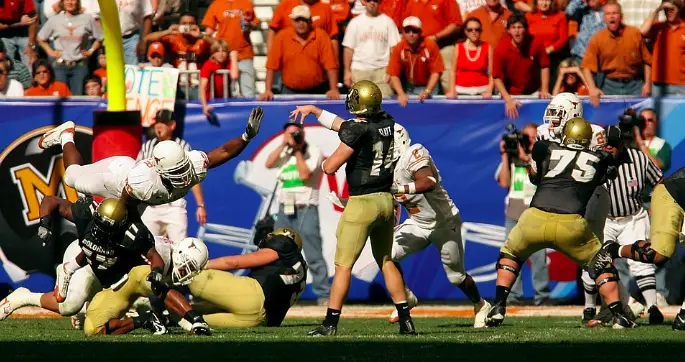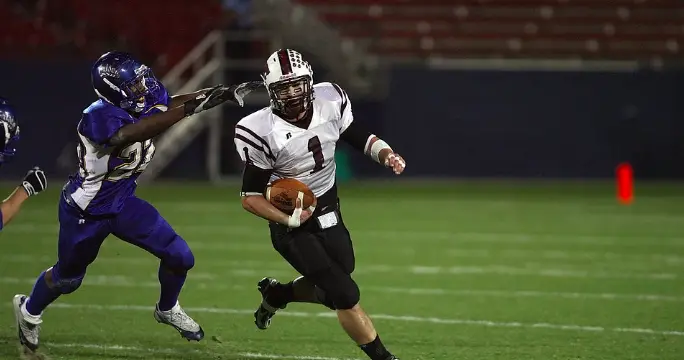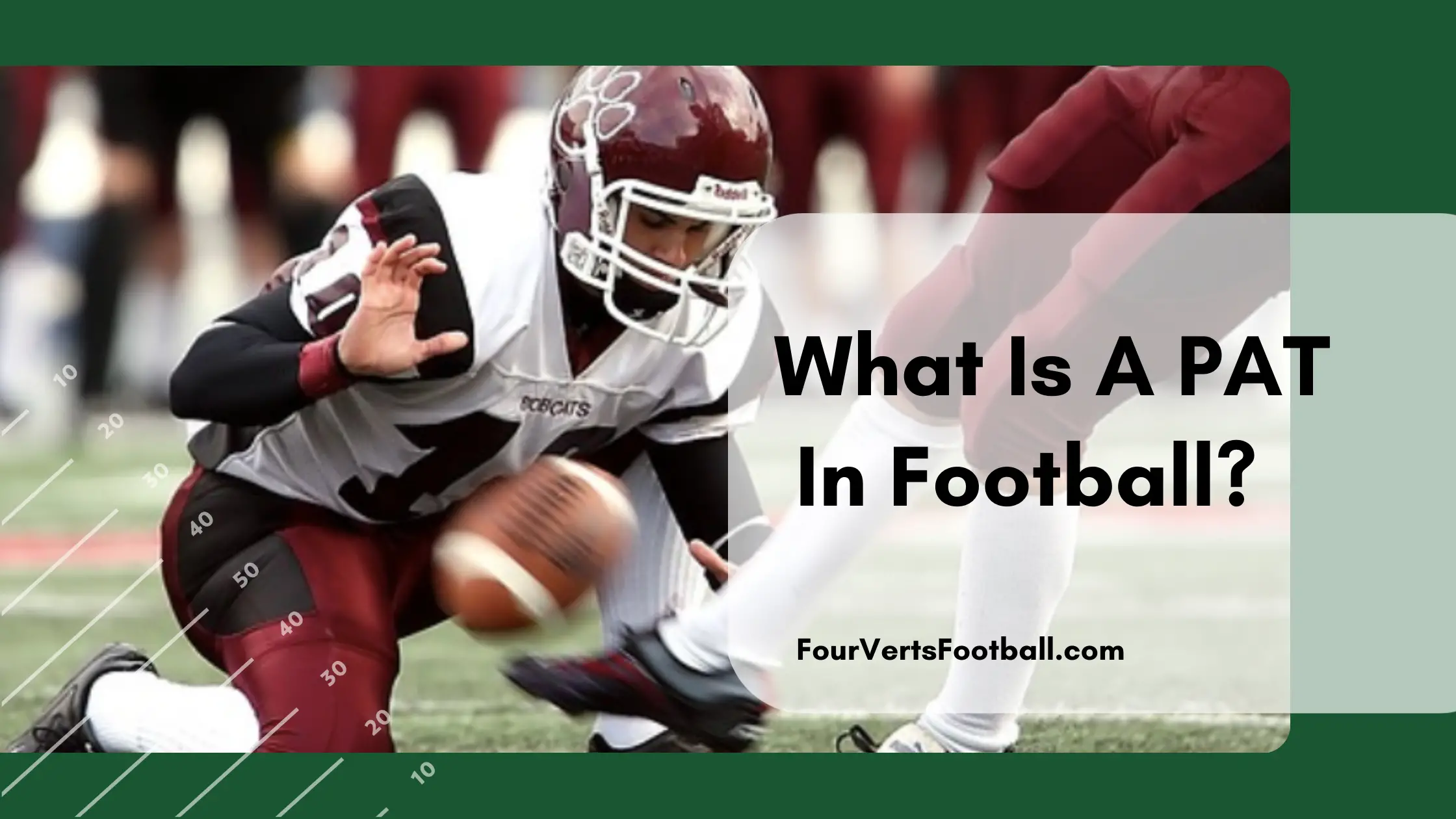We get it, there are so many acronyms and pieces of football terminology it can be tough to keep up. One often asked about terms in football is PAT.
PAT in football stands for point(s) after touchdown. When a team scores a touchdown they will be awarded six points. After the touchdown, they can elect to attempt a short kick for a one-point conversion or get one attempt from the 2-yard line to get the ball into the endzone for a two-point conversion.
In the vast majority of cases, teams will choose to go for the one-point conversion which is why a touchdown usually results in seven points. Six for the touchdown itself and one for the point after the touchdown.
Single Point After Touchdown

The single point after a touchdown is far and away from the more popular choice when it comes to PATs.
To get a single point after a touchdown a team must kick a field goal from 33 yards. The kick will take place on the fifteen-yard line, the uprights being at the back of the endzone and the distance of the kicker from the line of scrimmage make up the extra eighteen yards.
At this distance, kickers convert a single point after attempt successfully about 95% of the time.
Interestingly this number used to be even higher. In 2015 the NFL decided to make a rule change regarding point-after attempts.
Previously these kicks were attempted from the two-yard line. This resulted in the field goal distance only being twenty yards on point after touchdowns. This difference in distance was very impactful as before the rule change kickers barely missed PATs at all.
Nowadays point after attempts are a little more stressful on kickers but compared to a two-point conversion, a one-point attempt is still the safer option.
Two Point After Touchdown
The less common option of a PAT is the two-point conversion. The two-point conversion allows the offense to stay on the field in an attempt to get the ball into the endzone.
The ball will start at the two-yard line and offense will have a single opportunity to get the ball into the endzone.
If the offense is able to get the ball into the endzone they will be awarded two points. If there is any other result the conversion is considered failed the offense will not be awarded any points.
When To Go For Two?

Now that you know what the two different options are when it comes to PATs you may be wondering when each option is utilized.
The first thing that you need to know is that the one-point conversion is almost always the option chosen after scoring a touchdown.
This is because this option is much safer and has a much higher probability of converting successfully than a two-point conversion.
So this begs the question, when do teams go for a two point try after a touchdown? The main reason teams will go for two points during a point after attempt is when they are down by a large number of points.
If you are behind in a game a two-point conversion instead of one-point conversion can potentially make a two-score game a one-score game.
This need for extra points late in a game often forces coaches’ hands into attempting the extra point.
Another instance in which a two-point conversion may be attempted is after a penalty on the defense. Sometimes when attempting a kick for one point a defender may commit a penalty such as jumping offisdes or encroaching.
This penalty yardage can be applied to the position of the ball for a two-point advantage. This usually means teams will be attempting to score from the one-yard line instead of the two.
This improves your odds of scoring the two-point by a fair margin and for many coaches, this is enough to change their decision from a one-point PAT to a two-point.
Can the defense score on point after attempts?

Now that you know that PAT stands for point after attempt in football you may want to learn more about this topic.
One question often asked is whether the defense is able to score points themselves during a point after attempt.
If the offense commits a turnover the opponents can potentially score two points of their own. If a defender is able to gain possession of the ball and return it to the opposing team’s endzone then his team will be awarded two points.
This is also possible if a team is able to block and return a kick on a one-point PAT try.
The defense only earns two points for returning a ball to the endzone on a PAT because that is the max amount the offense can score.
In other words, getting the ball in the endzone during a PAT is going to count for two points whether it is done by the offense or the defense.
Additionally, the defense can also score a single point during an extra point via a safety.
A one-point safety occurs on a PAT when the defense is able to tackle a player with possession of the ball inside their own endzone.
These one-point safeties are incredibly rare due to the fact that teams start with the ball near their opponent’s endzone.
A safety is traditionally worth two points but in football but since this safety occurs during a PAT it is only worth a single point.

